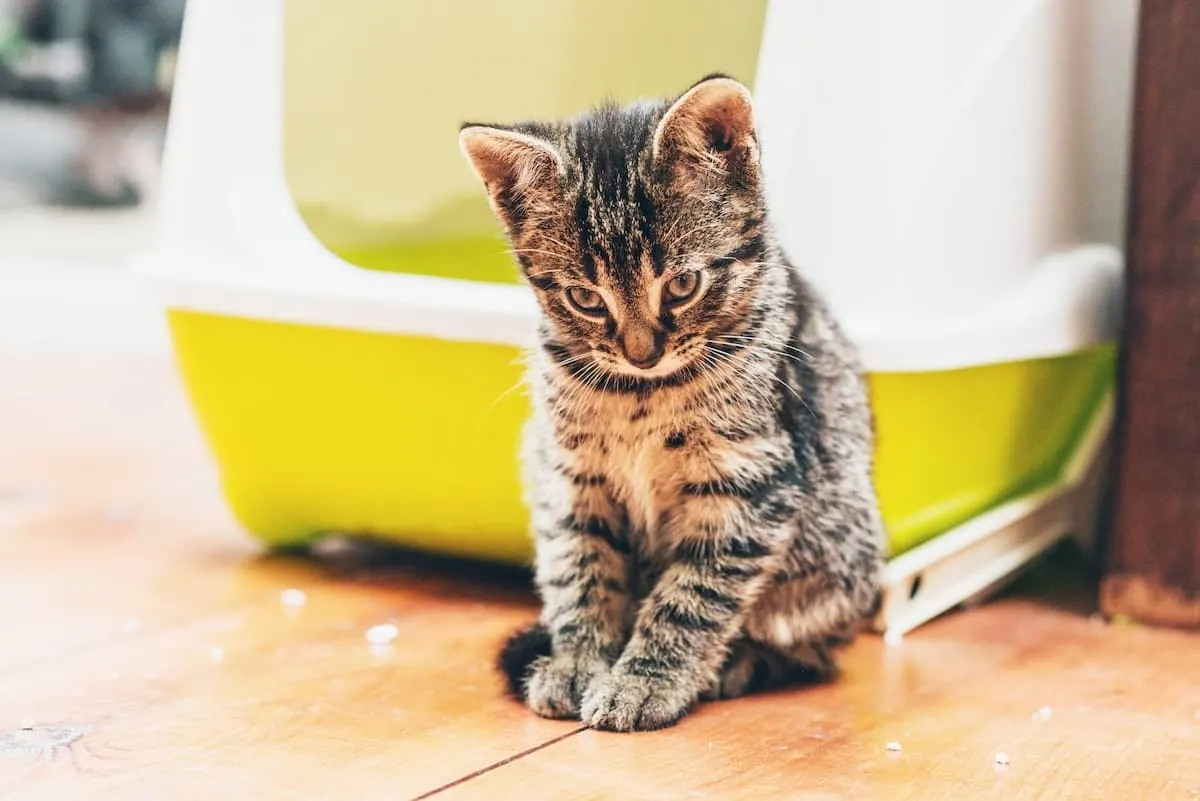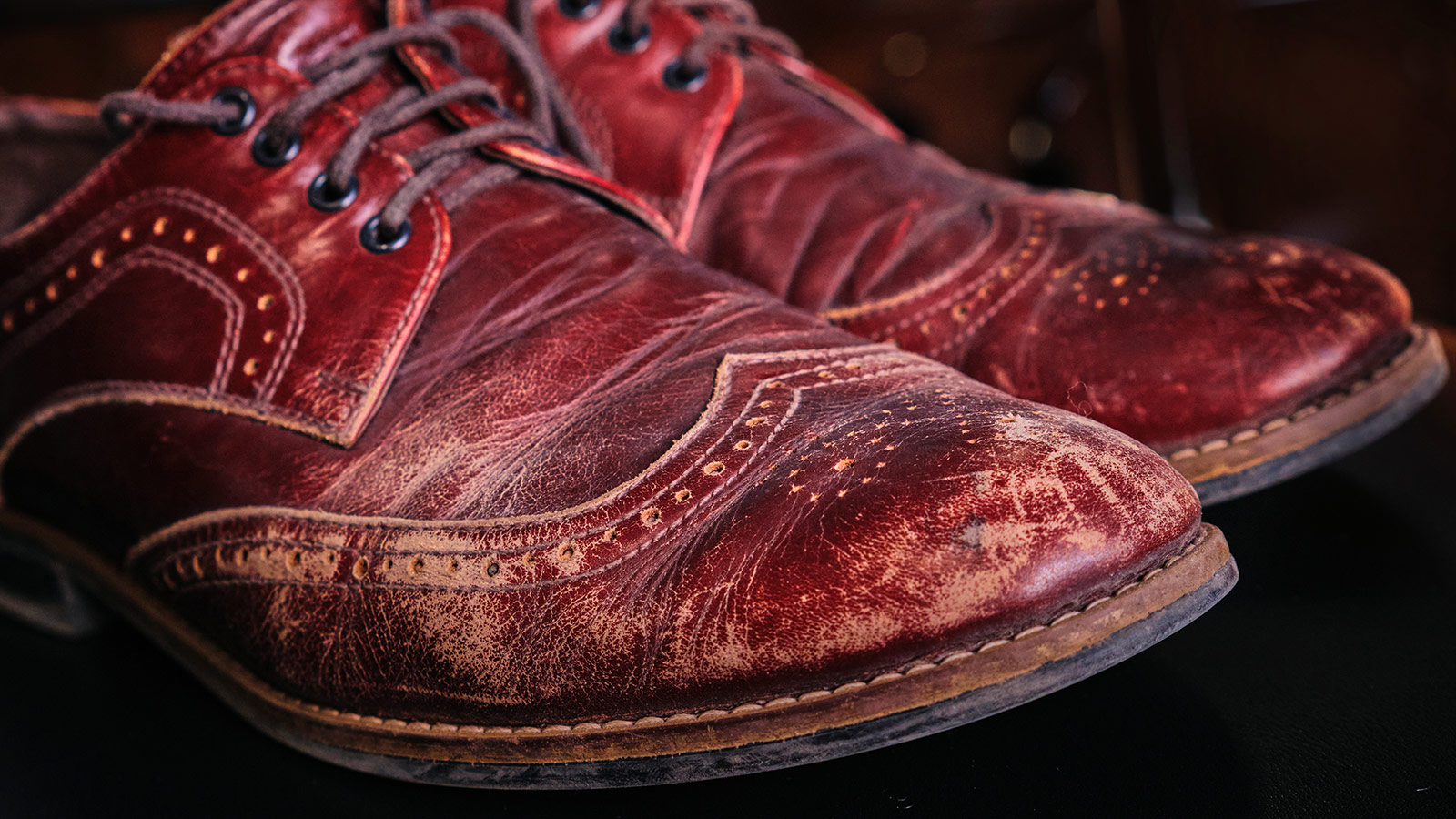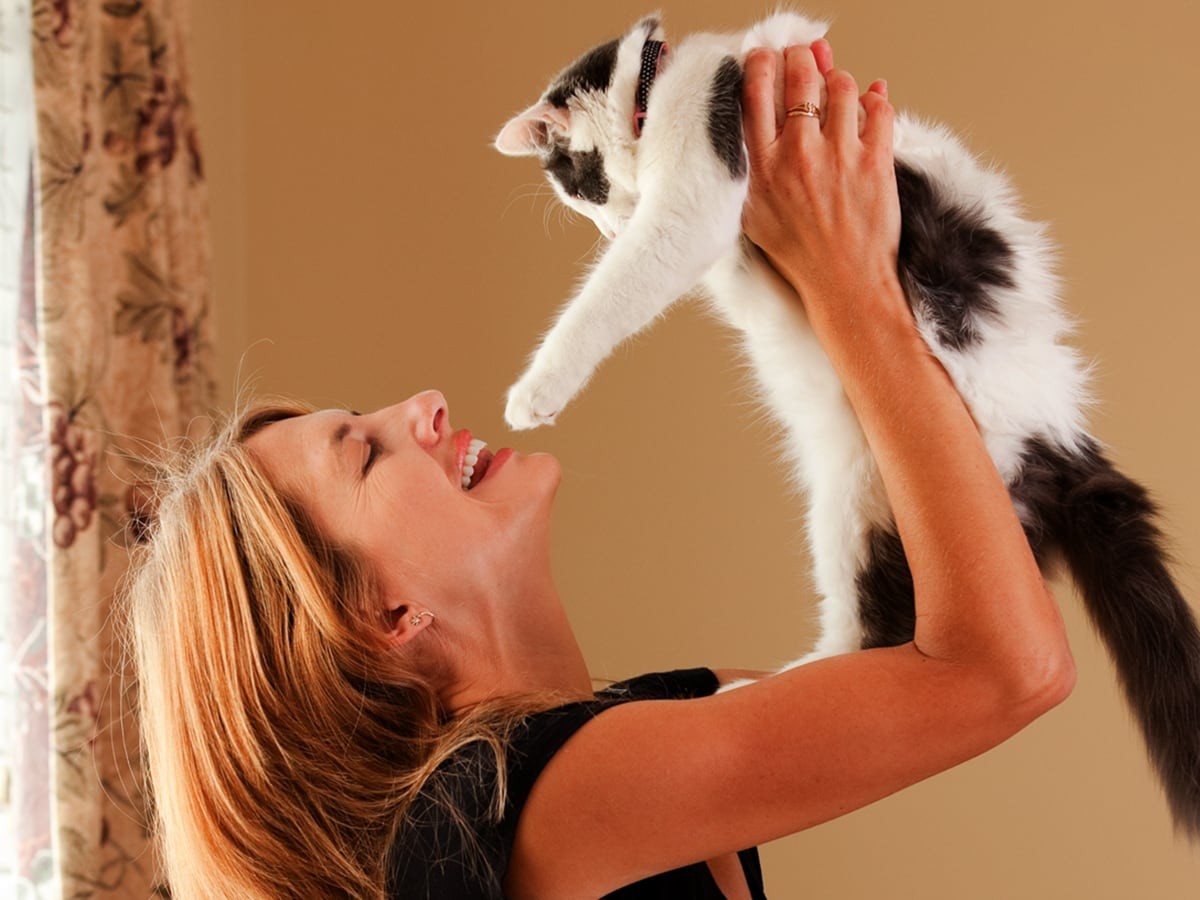

FAQs
Why Does My Cat Leave Skid Marks
Published: July 31, 2023
Discover the reasons behind your cat leaving skid marks and find answers to general questions about this behavior. Uncover practical solutions and tips to prevent and manage skid marks.
(Many of the links in this article redirect to a specific reviewed product. Your purchase of these products through affiliate links helps to generate commission for Under-tec.com, at no extra cost. Learn more)
Table of Contents
Why Does My Cat Leave Skid Marks
As a cat owner, you may have noticed unsightly skid marks left behind by your feline friend. These marks can be frustrating and unpleasant to deal with, but understanding why your cat is leaving them can help you address the issue effectively.
Skid marks are typically streaks or smears of feces that your cat leaves behind when they drag their hind legs on the ground after using the litter box. While it may seem like a simple matter of poor hygiene, there are various underlying factors that can contribute to this behavior.
One possible cause of skid marks is anal gland issues. Cats have anal glands located just inside their rectum, and these glands produce a smelly, oily substance. In normal circumstances, stool passing through the rectum helps to express these glands. However, if the glands become blocked or infected, the cat may attempt to alleviate the discomfort by dragging their hind legs, resulting in skid marks.
Diet and digestive problems can also contribute to skid marks. If a cat’s diet is not providing the right balance of fiber and moisture, their stool can become dry and firm, making it more difficult to pass. This can lead to straining during defecation, resulting in skid marks.
Stress and anxiety can affect a cat’s bathroom habits as well. When cats feel anxious or stressed, they may not fully relax during bowel movements, leading to incomplete evacuation and skid marks.
Another possible factor is an improper litter box setup or inadequate cleaning. Cats are known for their cleanliness, and if the litter box is dirty or in a location that feels unsafe or uncomfortable to them, they may rush their bathroom routine. This can increase the likelihood of skid marks.
Health issues should also be considered when dealing with skid marks. Conditions such as diarrhea, constipation, or parasites can all contribute to this problem. If you notice other symptoms like changes in appetite, weight loss, or lethargy, it’s crucial to consult with a veterinarian to rule out any underlying medical issues.
To prevent skid marks, it’s important to address the underlying cause. Start by ensuring that your cat’s diet is balanced and provides adequate fiber and moisture. Consider adding more wet food or providing access to fresh water throughout the day. Make sure the litter box is in a quiet and accessible location, and clean it regularly to provide a clean and comfortable environment for your cat.
If you suspect that stress or anxiety may be contributing to the skid marks, provide your cat with a calm and safe space, and consider using pheromone diffusers or other calming aids recommended by your veterinarian.
By addressing the root cause and making necessary changes, you can help your cat overcome the issue of skid marks, ensuring a clean and comfortable environment for both you and your furry friend.
Introduction
If you’re a cat owner, you may have encountered the frustrating problem of finding skid marks left behind by your beloved feline. These unsightly streaks or smears of feces on the floor or furniture can be a cause of concern and confusion. Why does your cat engage in this behavior?
Understanding the reasons behind your cat’s skid marks is essential in addressing the issue effectively. It’s important to remember that this behavior is not a deliberate act of defiance or a sign of poor hygiene on your cat’s part. Instead, it may be indicative of underlying factors that need to be identified and resolved.
In this article, we will delve into the possible causes of skid marks and explore ways to prevent this behavior. By gaining insights into why your cat may be leaving skid marks, you can take appropriate steps to tackle this problem and maintain a clean and comfortable environment for both you and your furry friend.
We will discuss various factors that can contribute to skid marks, including anal gland issues, diet and digestive problems, stress and anxiety, and improper litter box setup or cleaning. Additionally, we will touch upon the importance of considering your cat’s overall health and well-being in relation to this issue.
The aim of this article is to provide you with a comprehensive understanding of the possible causes of skid marks in cats and empower you with practical solutions to address the problem. By implementing the suggested strategies and making necessary adjustments, you can alleviate your cat’s discomfort and prevent skid marks from occurring in the future.
Remember, skid marks are not a reflection of your cat’s cleanliness or behavior. It is a common issue faced by many cat owners, and with proactive measures, it can be resolved. So, let’s delve into the world of skid marks and discover how we can help our feline companions lead happier, healthier lives.
Understanding Cat Behavior
In order to effectively address the issue of skid marks in cats, it’s crucial to have a deeper understanding of their behavior. Cats are known for their fastidious nature and meticulous grooming habits. They instinctively strive to keep themselves clean and maintain a tidy living environment.
Cats are also creatures of habit and routine. They prefer consistency and familiarity in their surroundings, and any changes or disruptions can cause them stress or anxiety. Understanding these innate behaviors can help us better comprehend why cats may engage in behaviors like leaving skid marks.
Another important aspect to consider is that cats have a heightened sense of smell. They use this sense to communicate, mark territory, and identify potential threats. Their scent plays a significant role in their interactions with the world around them.
When it comes to skid marks, it’s essential to recognize that this behavior is not a deliberate attempt to make a mess or cause inconvenience. Rather, it can be a sign of an underlying issue that needs attention.
Cats have a natural instinct to bury their waste in litter boxes, but if they are experiencing discomfort or pain while doing so, they may try to alleviate it by dragging their hind legs along the ground. This action can inadvertently leave skid marks behind.
Furthermore, cats may be sensitive to changes in their diet or environment. Any disruptions in their routine or exposure to new stimuli can trigger stress or anxiety, which can impact their bathroom habits.
Understanding these behavioral tendencies can help us approach the issue of skid marks with empathy and patience. It enables us to look beyond the surface behavior and address the underlying causes in a more effective manner.
By acknowledging and respecting a cat’s instincts and behaviors, we can create an environment that promotes their health and well-being. This, in turn, will contribute to a happier and more harmonious relationship between cat and owner.
Possible Causes of Skid Marks
Skid marks left behind by cats can be attributed to several potential causes. While it can be frustrating to deal with, identifying the underlying issue is crucial in finding the appropriate solution and preventing further occurrences.
1. Anal Gland Issues: Cats have anal glands located just inside their rectum, which produce a smelly, oily substance. Under normal circumstances, these glands are expressed during bowel movements. However, if the glands become blocked or infected, cats may drag their hind legs on the ground to try and alleviate discomfort, leaving skid marks behind.
2. Diet and Digestive Problems: A cat’s diet and digestive health play a significant role in their bathroom habits. If a cat’s diet lacks the appropriate balance of fiber and moisture, their bowel movements can become dry and firm, making it difficult to pass. Straining during defecation can result in skid marks.
3. Stress and Anxiety: Cats are sensitive creatures and can be easily stressed by changes in their environment or routines. This stress or anxiety can affect their bathroom behavior, causing them to rush through their defecation process, leading to incomplete evacuation and the presence of skid marks.
4. Improper Litter Box Setup and Cleaning: Cats are naturally clean animals and may be deterred from using a litter box if it is not set up correctly or if it is not cleaned regularly. If the litter box is dirty or in a location that feels unsafe or uncomfortable to the cat, they may rush their bathroom routine, resulting in skid marks.
5. Health Issues: Underlying health issues can contribute to skid marks in cats. Conditions such as diarrhea, constipation, or the presence of parasites can cause discomfort during defecation, leading to skid marks as the cat tries to alleviate the discomfort.
Understanding these possible causes can help you narrow down the reason behind your cat’s skid marks. Observation and monitoring of your cat’s behavior, along with consulting a veterinarian, can help you determine the cause and take appropriate action to address it.
Remember, each cat is unique, and the causes of skid marks can vary from one individual to another. By identifying and addressing the underlying cause, you can effectively manage and prevent the occurrence of skid marks in your feline companion.
Anal Gland Issues
Anal gland issues are a common cause of skid marks in cats. Cats have two small glands located on either side of their rectum, known as anal glands or anal sacs. These glands secrete a smelly, oily substance that is typically released when a cat defecates. The scent from these secretions is a form of communication and marking behavior in cats.
Under normal circumstances, the act of passing stool helps to empty and express the anal glands naturally. However, when these glands become blocked, infected, or impacted with thickened secretions, it can lead to discomfort and irritation for the cat.
Cats with anal gland issues may exhibit behaviors such as scooting their rear end on the ground, licking or biting the area excessively, or dragging their hind legs after using the litter box. This dragging behavior can result in skid marks on surfaces.
There are several reasons why anal gland issues may arise in cats. One common cause is poor gland function, whereby the glands are not expressing properly during bowel movements. This can lead to the glands becoming blocked or infected.
Another possible cause is a diet that lacks the proper balance of fiber and moisture. A lack of fiber in the diet can result in firmer stools, which do not effectively stimulate the glands during defecation. This can lead to a build-up of secretions and subsequent issues.
If left untreated, anal gland problems can worsen and cause further complications. Cats may experience pain, swelling, or the formation of abscesses. In severe cases, abscesses may rupture, leading to an infection that requires immediate veterinary attention.
If you suspect that your cat has anal gland issues, it is essential to consult with your veterinarian. They can examine your cat, express the anal glands if necessary, and provide guidance on proper treatment and prevention.
Treatment options for anal gland issues may include manual expression of the glands, medication to address infection or inflammation, or changes in diet to improve stool consistency and promote regular gland function.
Prevention is key when it comes to managing anal gland issues in cats. Providing a diet rich in fiber, such as high-quality wet food or adding fiber supplements, can help promote regular bowel movements and proper gland expression. Regular grooming of the perianal area can also help prevent gland blockage and infection.
Remember, anal gland issues are a common concern in cats, and timely intervention can help alleviate discomfort for your feline friend. Paying attention to their behavior, seeking veterinary advice, and implementing preventive measures can minimize the occurrence of skid marks caused by anal gland problems.
Diet and Digestive Problems
Your cat’s diet and digestive health play a significant role in their overall well-being and can contribute to the occurrence of skid marks. What they eat directly affects their gastrointestinal tract and the quality of their bowel movements.
One possible cause of skid marks is a lack of proper fiber and moisture in your cat’s diet. Fiber is essential for maintaining healthy digestion and promoting regular bowel movements. When a cat’s diet lacks sufficient fiber, their stool can become dry, hard, and difficult to pass.
Dry and firm stool can lead to straining during defecation, which may result in skid marks as the cat attempts to “shake off” or drag their hind legs to alleviate discomfort. It’s crucial to ensure that your cat’s diet is balanced and includes adequate sources of fiber.
Incorporating wet food into your cat’s diet can help increase their moisture intake and promote softer, well-formed stools. Alternatively, you can discuss fiber supplements with your veterinarian, ensuring they are suitable for your cat’s specific needs.
Furthermore, sudden changes in diet can also affect a cat’s digestive system, leading to irregular bowel movements and potential skid marks. Cats are known for their sensitivity to new foods, so it’s important to introduce any dietary changes gradually, allowing their digestive system to adjust.
In addition to the type of food, the frequency of feeding can also play a role in your cat’s digestive health. Providing regular, consistent meals can help regulate their bowel movements and prevent episodes of constipation or diarrhea, both of which can contribute to skid marks.
It’s essential to pay attention to your cat’s eating habits and monitor any changes in their stool consistency. Talk to your veterinarian if you notice persistent digestive problems or if your cat’s stool is consistently dry or difficult to pass.
In some cases, underlying health conditions, such as inflammatory bowel disease or gastrointestinal disorders, may contribute to digestive problems and skid marks. Your veterinarian can conduct a thorough examination and run necessary tests to identify any underlying issues that need to be addressed.
By providing a balanced diet, incorporating adequate fiber and moisture, and maintaining a consistent feeding routine, you can help support your cat’s digestive health and reduce the occurrence of skid marks. Regular veterinary check-ups and open communication with your veterinarian are crucial for monitoring your cat’s specific dietary needs and making any necessary adjustments.
Stress and Anxiety
Stress and anxiety can have a significant impact on a cat’s behavior, including their bathroom habits. Cats are sensitive creatures that thrive in a calm and predictable environment. Any changes or disruptions to their routine or surroundings can trigger stress or anxiety, which may manifest in various ways, including the occurrence of skid marks.
When a cat feels stressed or anxious, their body releases stress hormones that can affect their digestive system and bowel movements. In these situations, cats may not fully relax during defecation, leading to incomplete evacuation and the presence of skid marks.
There are various factors that can cause stress and anxiety in cats. Common triggers include changes in the household, such as moving to a new home, the addition of a new family member (human or pet), changes in daily routines, or loud noises and disruptions.
It’s important to create a calm and stable environment for your cat to help minimize their stress levels. Provide them with a designated safe space where they can retreat and feel secure. This can be a quiet room or a secluded area with their favorite toys, bedding, and scratching posts.
Additionally, you can consider using pheromone diffusers or sprays, which can help to create a calming atmosphere for your cat. These products release synthetic pheromones that mimic the natural scent produced by cats, providing a sense of familiarity and reducing stress.
Ensuring that your cat has plenty of opportunities for mental stimulation and physical exercise can also aid in reducing stress. Regular play sessions, interactive toys, and vertical spaces for climbing and perching can help channel their energy and reduce anxiety.
If you suspect that stress or anxiety may be the cause of your cat’s skid marks, it’s important to consult with your veterinarian. They can help determine the underlying factors contributing to your cat’s stress and provide guidance on how to manage and reduce it.
In certain cases, your veterinarian may recommend behavior modification techniques or medication to help alleviate your cat’s anxiety. It’s essential to follow their advice and monitor your cat’s progress, adjusting any interventions as needed.
Remember, cats are sensitive beings that can easily be affected by changes in their environment or routines. By creating a calm and stress-free atmosphere, you can help minimize their anxiety and reduce the occurrence of skid marks as a result of their emotional distress.
Improper Litter Box Setup and Cleaning
The setup and maintenance of the litter box are crucial factors in a cat’s bathroom habits. Cats are naturally clean animals, and any issues with the litter box can lead to stress, discomfort, and the occurrence of skid marks.
1. Litter Box Size and Accessibility: The size and accessibility of the litter box are important considerations. It should be large enough for your cat to comfortably turn around and dig, and the sides should be low enough for easy entry and exit. If the litter box is too small or difficult for your cat to access, they may feel constrained and rush their bathroom routine, leading to skid marks.
2. Litter Box Placement: The location of the litter box is equally important. It should be in a quiet, low-traffic area where your cat feels safe and comfortable. Avoid placing the litter box near noisy appliances, loud sounds, or areas with high foot traffic. If the litter box location is stressful or intimidating, your cat may rush through their bathroom routine, resulting in skid marks.
3. Number of Litter Boxes: The number of litter boxes in your home is also significant. As a general rule, it’s recommended to have one litter box per cat, plus an extra one. This helps prevent overcrowding and provides each cat with sufficient options for elimination. If there are not enough litter boxes available, your cat may feel anxious or rushed, potentially resulting in skid marks.
4. Litter Box Cleanliness: Regular cleaning of the litter box is essential to maintain proper hygiene. Cats prefer a clean and odor-free litter box, and if it becomes dirty or filled with waste, they may avoid using it or rush their bathroom routine. If a cat feels the need to relieve themselves quickly due to a dirty litter box, skid marks may occur.
5. Litter Type and Depth: The type of litter used and its depth can also influence a cat’s bathroom behavior. Cats have preferences when it comes to litter texture and scent, so it’s important to find a litter that your cat is comfortable with. Additionally, ensuring an appropriate depth of litter can provide a comfortable and adequate digging surface for your cat.
By addressing these litter box setup and cleaning factors, you can create an environment that promotes comfortable and stress-free elimination for your cat. Regularly scoop out waste, change the litter as necessary, and maintain a clean and odor-free litter box. This will encourage your cat to use the litter box consistently and reduce the likelihood of skid marks.
Observing your cat’s behavior and preferences can also help identify any specific litter box issues. If you notice that your cat is consistently avoiding the litter box or exhibiting signs of discomfort, consult with your veterinarian. They can provide guidance and help rule out any potential health concerns that may be contributing to the problem.
Remember, a well-maintained and properly set up litter box is essential for your cat’s comfort and hygiene. By ensuring a positive litter box experience, you can help prevent skid marks and promote a healthy bathroom routine for your feline companion.
Health Issues to Consider
When addressing the issue of skid marks in cats, it’s important to consider potential underlying health issues that may contribute to this problem. Skid marks can sometimes be a symptom of an underlying medical condition that requires attention and treatment from a veterinarian.
1. Diarrhea: Cats with diarrhea may experience difficulty controlling their bowel movements, resulting in skid marks. Diarrhea can be caused by various factors, including dietary changes, infections, parasites, medications, or underlying gastrointestinal issues. If your cat’s stool is consistently loose, watery, or frequent, it’s important to consult with your veterinarian for a proper diagnosis and treatment.
2. Constipation: On the other hand, constipation can also contribute to skid marks. If a cat is constipated, they may struggle to pass stools, resulting in firm or dry feces. The strain associated with constipation can cause discomfort and lead to skid marks as the cat tries to alleviate the difficulty of elimination. Your veterinarian can provide guidance on managing constipation and recommend appropriate dietary adjustments or medications if necessary.
3. Parasites: Parasites such as worms (e.g., roundworms, tapeworms) can affect a cat’s gastrointestinal system and bowel movements. These parasites can cause digestive disturbances, leading to irregular bowel movements and potential skid marks. Regular deworming and proper parasite prevention, as advised by your veterinarian, can help minimize the risk of these infestations.
4. Gastrointestinal Disorders: Cats can also experience various gastrointestinal disorders that can impact their bowel movements and contribute to skid marks. Conditions such as inflammatory bowel disease (IBD), irritable bowel syndrome (IBS), or gastrointestinal infections can all cause digestive disturbances and discomfort. A proper diagnosis from your veterinarian is necessary to determine the specific disorder and establish an appropriate treatment plan.
5. Other Health Concerns: Skid marks may occasionally be associated with other health issues, such as anal fissures, rectal tumors, or nerve damage. If you notice blood in the stool, persistent pain, weight loss, changes in appetite, or lethargy alongside skid marks, it’s important to consult with your veterinarian for a thorough evaluation.
Addressing any underlying health issues is crucial in managing skid marks effectively. Your veterinarian will perform a physical examination, review the cat’s medical history, and may recommend additional diagnostic tests if necessary.
Based on the diagnosis, your veterinarian will develop a treatment plan tailored to your cat’s specific needs. This may involve medications, dietary changes, or other interventions to address the underlying health issue contributing to the skid marks.
It’s essential to regularly monitor your cat’s health and behavior, reporting any changes or concerns to your veterinarian. Early detection and prompt treatment of health issues can help alleviate discomfort, promote well-being, and reduce the occurrence of skid marks.
How to Prevent Skid Marks
Preventing skid marks in cats involves addressing the underlying causes and implementing strategies to promote proper elimination habits. By taking proactive measures, you can create a clean and comfortable environment for your cat while minimizing the occurrence of skid marks.
1. Provide a Balanced Diet: Ensure that your cat’s diet is balanced and provides the necessary nutrients, fiber, and moisture. Consult with your veterinarian to determine the appropriate diet for your cat’s specific needs. A balanced diet promotes healthy digestion and regular bowel movements, reducing the chances of skid marks.
2. Optimal Litter Box Setup: Set up the litter box in a quiet and accessible area where your cat feels safe and comfortable. Use a litter box that is large enough for your cat to easily turn around in, with low enough sides for easy entry and exit. Consider having multiple litter boxes, especially in multi-cat households. Regularly clean the litter box and ensure it is free of waste and odors.
3. Stress Reduction: Minimize stress and ensure a calm environment for your cat. Provide them with a designated safe space and consider using pheromone diffusers or sprays to create a calming atmosphere. Engage your cat in regular play sessions and provide mental stimulation to reduce anxiety and promote relaxation.
4. Regular Veterinary Check-ups: Schedule regular check-ups with your veterinarian to monitor your cat’s overall health and address any underlying medical conditions that may contribute to skid marks. Your veterinarian can provide guidance on preventive care, including vaccinations, deworming, and maintaining proper gastrointestinal health.
5. Hygiene and Grooming: Maintain good hygiene by regularly grooming your cat, paying particular attention to the perianal area. This reduces the risk of blocked anal glands and provides comfort during elimination. If your cat has long hair, consider trimming the hair around the anus to prevent feces from sticking to the fur.
6. Monitoring and Prompt Intervention: Stay vigilant and monitor your cat’s bathroom habits. If you notice any signs of discomfort, changes in stool consistency, or the occurrence of skid marks, consult with your veterinarian promptly. Early intervention can prevent the situation from worsening and help address the underlying issue effectively.
7. Consistency and Routine: Maintain a consistent schedule for feeding, playtime, and litter box cleaning. Cats thrive on routine and familiarity, and having a consistent schedule can reduce stress and promote regular elimination habits.
Remember, prevention is key when it comes to skid marks in cats. By addressing the underlying causes, providing a comfortable and stress-free environment, and promoting proper elimination habits, you can effectively prevent skid marks and ensure a clean and healthy experience for your furry companion.
Conclusion
Dealing with skid marks in cats can be a frustrating and unpleasant experience for both pet owners and their feline companions. However, by understanding the underlying causes and taking proactive measures, skid marks can be prevented and managed effectively.
Anal gland issues, diet and digestive problems, stress and anxiety, improper litter box setup or cleaning, and health issues are all potential contributors to the occurrence of skid marks in cats. By addressing these factors, cat owners can significantly reduce the likelihood of skid marks and promote better bathroom habits for their pets.
Providing a balanced diet that includes adequate fiber and moisture is essential for maintaining healthy digestion and promoting regular bowel movements. Proper litter box setup and cleaning, as well as minimizing stress and anxiety in the cat’s environment, help create a comfortable and stress-free elimination experience.
Regular veterinary check-ups, hygiene and grooming practices, and consistent routines also play a vital role in preventing skid marks and maintaining a clean and healthy environment for cats.
It’s important to remember that skid marks are often a symptom of an underlying issue and not a deliberate act on the part of the cat. Through observation, understanding, and proactive measures, cat owners can address these issues and provide their feline companions with the care and support they need.
If skid marks continue to be a persistent problem despite preventive measures, it’s crucial to consult with a veterinarian. A professional medical evaluation can help identify and address any underlying health conditions or concerns contributing to this behavior.
In conclusion, by understanding the various factors that contribute to skid marks and implementing appropriate preventive measures, cat owners can promote a clean and comfortable environment for their beloved feline friends. With patience, diligence, and veterinary guidance, skid marks can be effectively managed and minimized, ensuring a happier and healthier quality of life for both cats and their owners.










